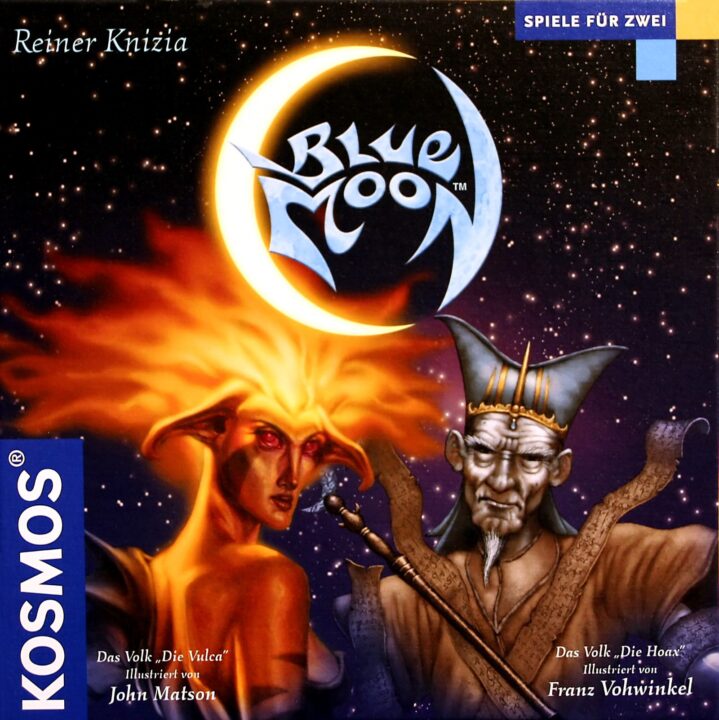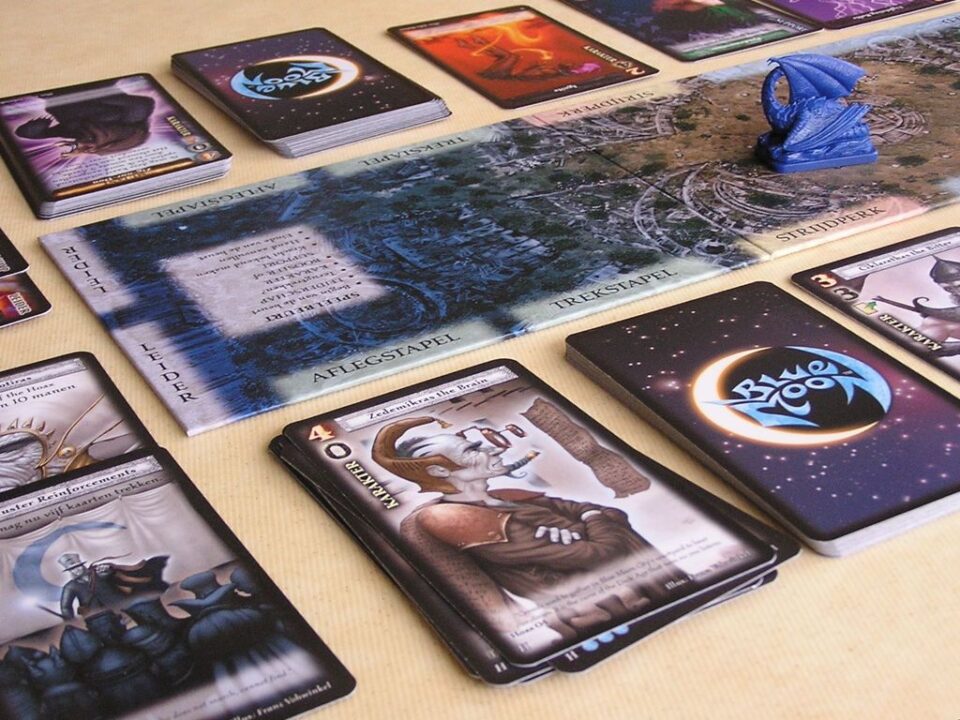Alright, folks, it’s time for another review! Today, we’re diving into the world of Blue Moon, a game that’s as strategic as a chess match but with way cooler artwork. I’ve gathered my friends, rolled up my sleeves, and immersed myself in this game to bring you the good, the bad, and the hilarious. Get ready for a journey through unique factions, intense resource management, and some seriously eye-catching components. Let the review begin!
How It Plays
Setting Up
First, choose your faction decks. Set up the game board and place the market cards in the center. Each player then shuffles their deck and draws six cards. Place your leader card face up in front of you.
Gameplay
On your turn, play cards from your hand to challenge your opponent or strengthen your position. Cards have different abilities, and managing these is key. Resource cards help you play stronger cards later. You can either attack, defend, or pass. The turn ends when both players pass consecutively.
Winning the Game
The game ends when one player can’t draw anymore cards or if someone runs out of options. You win by having the most ‘victory points’ which are earned by winning battles and controlling key areas of the board.
Want to know more? Read our extensive strategy guide for Blue Moon.
Gameplay Mechanics Overview of Blue Moon
When I first cracked open the box of Blue Moon, I had no idea what to expect. The art was striking, and the cards felt like they could tell their own tales. Little did I know, the gameplay mechanics would send me on a journey deeper than I’d imagined.
In Blue Moon, each player becomes a leader of a unique faction, each with its own set of cards and strategies. My friend Dave always picks the Vulca, which suit him because he’s sort of a hothead too. Every faction has its strengths and weaknesses, making the game a strategic tug-of-war. You’ll need to outwit your opponent, predicting their moves and countering them with your own.
The main mechanic revolves around playing cards from your hand to win battles. But it’s not just about brute strength! You’ll often find yourself playing trick cards, special abilities, and managing resources like Moon Crystals. I learned the hard way that using up all your powerful cards too early leaves you vulnerable, like the time I got overly excited and Dave wiped me out in three rounds.
Another mechanic I love is the leadership dynamic. Each turn, a player must choose a leader who can drastically change the course of the game with unique abilities. Deciding when to play your leader’s card can turn the tide in your favor, or as often is the case for me, leave you in a pickle if you misjudge the timing.
Stay tuned for the next section where we’ll explore whether Blue Moon‘s mechanics keep things balanced and fair, or if they leave you cursing the Moon itself!
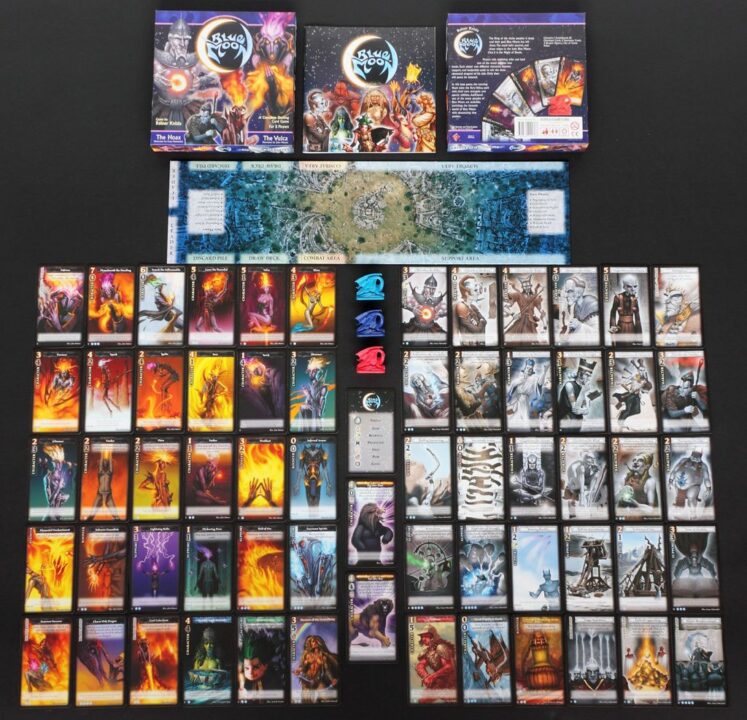
Balance and Fairness in Blue Moon
If you’ve ever played a game and felt like tossing the board out the window because the odds were stacked against you, you’ll appreciate Blue Moon. This game is refreshingly fair! Every faction is unique, but none feel overpowered, which is a huge plus in my book. Fairness is key, and Blue Moon nails it.
My friends and I have put Blue Moon through the wringer. We’ve tried every combo of factions and strategies, and it always feels balanced. One time, my buddy Steve thought he had cracked the code with the Vulca faction. But just when he got cocky, I whipped out the Hoax faction and gave him a run for his money. He was speechless, and I was grinning like a cat with a bowl of cream.
The designer, Reiner Knizia, is a name you can trust when it comes to game balance. His work on Blue Moon shows his deep understanding of fair play. The game’s mechanics ensure that every match feels like a mental duel rather than a luck-driven fiasco. It’s like a well-mixed cocktail; a perfect blend of skill, strategy, and a dash of excitement.
Even the way cards are drawn and played maintains this fairness. You never feel like the game is being unfair. If you lose, it’s because your opponent outwitted you, not because the universe decided to mess with your plans.
Ready to explore how Blue Moon balances luck and strategy? Buckle up, because the next section is going to roll the dice!
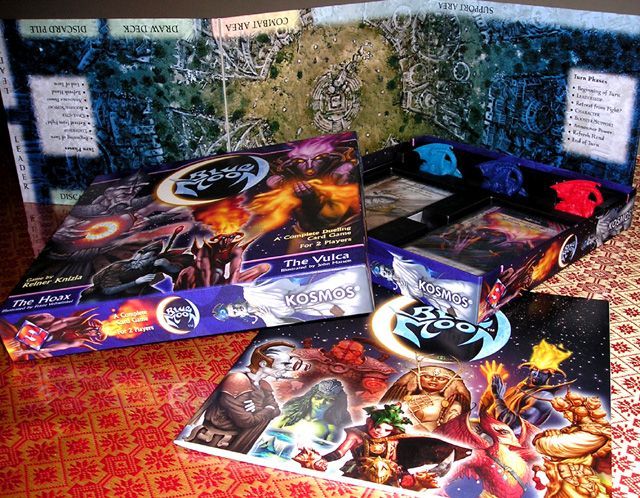
Luck vs Strategy in Blue Moon
When you play Blue Moon, you quickly realize it’s not your average luck-fest. Oh no, sir! If you’ve ever cursed the dice gods, this game might be your saving grace. Blue Moon focuses heavily on strategy. You’ve got to think on your feet and plan your moves while considering your opponent’s next steps.
This game is all about factions, each with its unique style and cards. Choosing the right faction involves strategy, as each one has its strengths and weaknesses. If you go in hoping to luck your way through, you’ll end up as disappointed as a cat in a dog park. The game rewards players for their tactical maneuvers and punishes those who rely solely on chance. This keeps the gameplay fresh and skill-based, just how I like it.
Let’s not forget the resource management aspect. You must keep an eye on your cards and resources, weighing their usage to outsmart your opponent. Drawing cards is the closest thing to a luck element here, but even that demands smart thinking. Is it the right time to play a powerful card or to save it for a future round? That decision can make or break your game.
Overall, Blue Moon is like a chess game with a fantasy twist. Strategy trumps luck just about every time, making victory all the more satisfying. It’s like solving a complex puzzle where each piece matters.
Ready to hear about the mesmerizing artwork and top-notch components? Hold on to your wizard hat, because that’s up next!
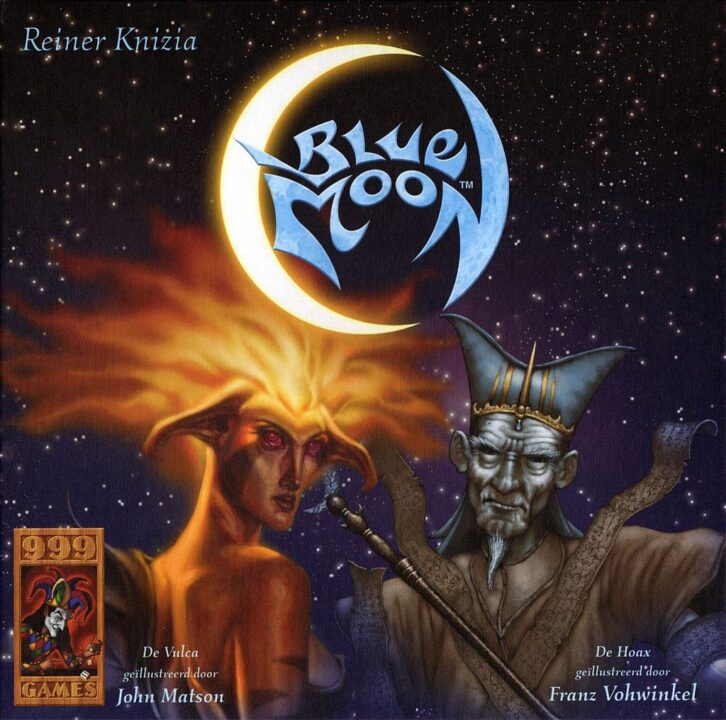
Artwork and Components of Blue Moon: A Closer Look
Blue Moon doesn’t just shine in gameplay; it’s also a feast for the eyes. The artwork is colorful and detailed, like a painting come to life. Each card features distinct, vibrant imagery that really pops out at you. I caught myself staring at the cards longer than usual during our games, just soaking it all in.
The components in the Blue Moon game are top-notch. The cards are of high quality, with a sturdy feel to them. They can handle some shuffling, which is good since my friends and I are not exactly gentle giants. The game also comes with different decks for each faction, each with its own unique design and theme. It’s like owning tiny pieces of art.
One night, after a few rounds, my buddy Rick even said, “This game gives Magic: The Gathering a run for its money in the looks department!” And he’s a die-hard Magic fan, so that’s saying something.
The game box is compact and well-organized, unlike some other games that feel like they come with more air than components. Everything has its place, which makes setting up and packing away a breeze. The rulebook is clear and filled with illustrations to help you learn the game quickly.
Overall, Blue Moon is as much a treat to look at as it is to play. If you value beautiful artwork and high-quality components, this game is definitely worth adding to your collection. I highly recommend it!
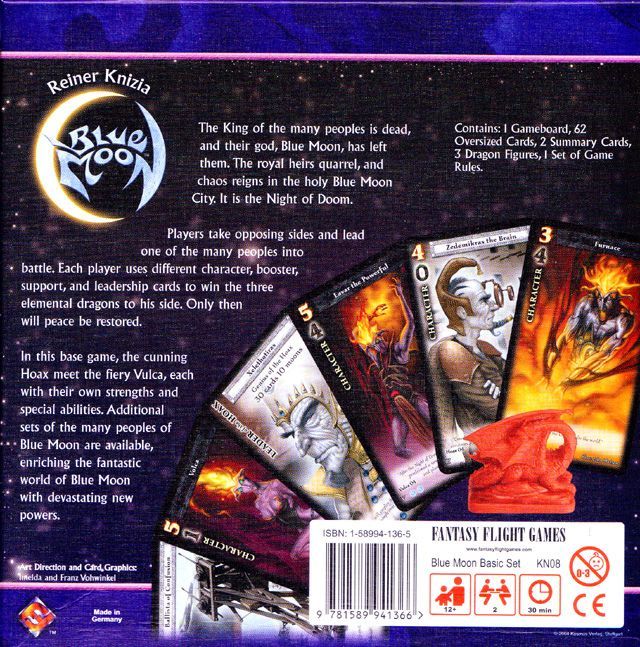
Conclusion
Blue Moon is a gem for those who love strategy with a dash of fantasy. The unique factions, balanced gameplay, and vibrant artwork make it a solid pick for game nights. While luck is present, it doesn’t overshadow the skill and strategy needed. If you’re tired of games where luck dictates the winner, Blue Moon will be a breath of fresh air. So, gather your friends, pick your factions, and let the epic battles begin. That’s it for my review; happy gaming!

